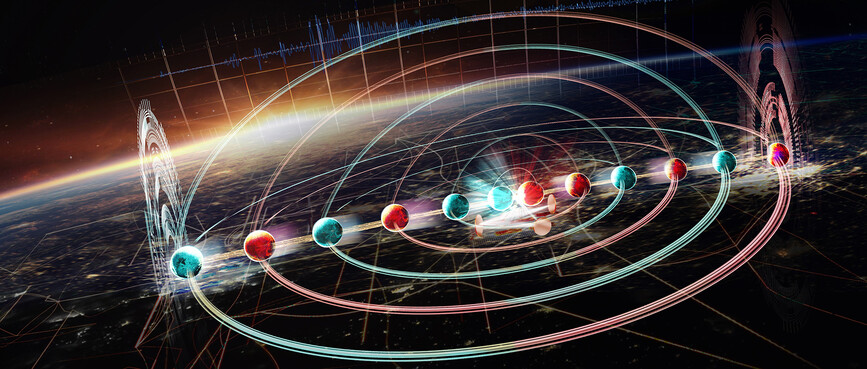Once again, scientists at the Institute for Quantum Optics and Quantum Information Vienna of the Austrian Academy of Sciences (OeAW) have set a new world record in quantum entanglement: For the first time, entangled photons, i.e., light particles, have been sent over 248 kilometers of laid optical fiber. The previous record distance of almost 100 kilometers from 2019 was therefore more than doubled. Details have now been published in the journal Nature Communications.
The aim of the latest experiment was to create a first node in the QUAPITAL network, a research project for a Central European quantum internet. Quantum networks promise completely tap-proof communication and powerful distributed sensor networks for research and technology – they are considered the communication channels of the future. Pioneering groundwork in this area was also carried out by Nobel Prize winner Anton Zeilinger.
“SPOOKY LONG-DISTANCE EFFECT” FROM SANKT PÖLTEN TO BRATISLAVA
As part of the QUAPITAL project, a transmitter in Vienna sent quantum states to Sankt Pölten and Bratislava for several days. There they were measured and their quantum physical properties were verified. A source of entangled photon pairs in the basement of the Physics Institute of the University of Vienna was connected to two optical fibers that had already been laid. The two fiber lines, each approximately 125 kilometers long, led to receiving stations near Sankt Pölten and in the Slovak Academy of Sciences in Bratislava.
“Quantum entanglement makes it possible to generate so-called correlated randomness. It’s as if two coins that are tossed in different places – in our case Sankt Pölten and Bratislava – always fall on the same side,” explains Rupert Ursin, scientific head of the project at the OeAW. This effect, described by Einstein as “spooky action at a distance”, is not only interesting from a physics point of view, but also has specific applications. The most commercially mature of these is encrypted data transmission using quantum technology. With this so-called quantum cryptography, the “coin tosses” can be used to encrypt messages in a way that is unhackable. The transmission of entanglement will also allow future quantum computers to be connected.
IMPORTANT PREREQUISITES FOR FUTURE QUANTUM INTERNET
Sebastian Neumann, OeAW first author of the publication and in charge of conducting the experiment, describes the greatest challenges: “Unlike the ‘normal’ internet signal, quantum states cannot be read out and amplified along the way. As a result, line losses become a problem because only about every hundred millionth photon pair sent out actually arrives at the detectors.”
The rate of photons generated in Vienna therefore has to be high. “For this we constructed a special photon source, which we published separately,” Neumann says. Furthermore, the signal had to be made insensitive to temperature fluctuations in the fiber, for which a special stabilization system was devised. This allows for uninterrupted operation of the line, another important requirement for a future quantum internet.
On December 10th, Anton Zeilinger was awarded the Nobel Prize in Physics for his research into quantum entanglement with photons. Austrian research on quantum physics as it is carried out at the OeAW, where Zeilinger is also researching, is among the best in the world.
Publications:
“Continuous entanglement distribution over a transnational 248 km fiber link”, Sebastian Philipp Neumann, Alexander Buchner, Lukas Bulla, Martin Bohmann & Rupert Ursin, Nature Communications 2022
DOI: https://doi.org/10.1038/s41467-022-33919-0
“Experimental entanglement generation for quantum key distribution beyond 1 Gbit/s”, Sebastian Philipp Neumann, Mirela Selimovic, Martin Bohmann & Rupert Ursin, Quantum 2022
DOI: https://doi.org/10.22331/q-2022-09-29-822

